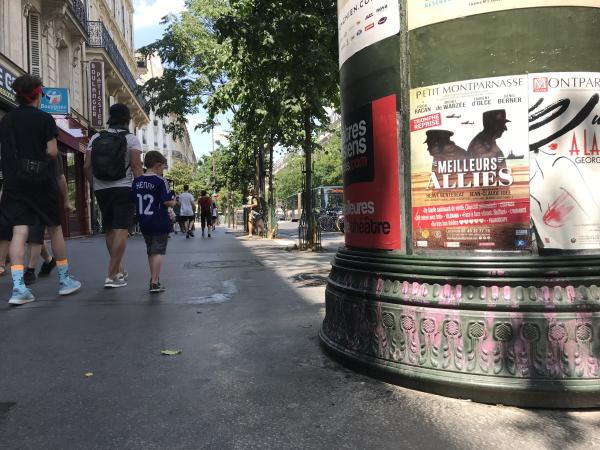
María Amparo Alonso Sanz
Exploring City Environments, Cultural Urban Offers & Issues, and Citizens’ Behaviours.
In what ways does a large city such as Paris interact with its inhabitants in a cultural and educational manner?
Beyond this main question, three specific objectives are developed:
- studying the interactions between peoples’ behaviours and the city environment, as well as comparing two European cities’ heritage: Ljubljana and Paris;
- studying the interactions between cinema advertising, as a cultural urban offer, and citizens;
- analysing drifting and cartography as a pedagogical tool for teaching cultural issues in cities.
The main methodology used is art-based research, through:
drifting, photography and sketches for collecting data;
psycho-geographies, cartographic techniques and photo-essays, in order to present results.
60 numbers.
The idea is to reveal the characteristics of two contrasting European cities, Paris and Ljubljana, through 60 photographs of each, and thus to compare their heritage and their citizens’ behaviours.
The process of choosing the emplacement of each photograph depends on finding a number (on floor, on a wall, or in any other specific context...). Such a randomized system aims to show the reality of a city away from touristic representations. This will help to visualise and compare the role of visual culture, arts and imaginations between a larger and a smaller city.
Between cinema advertising and citizens.
Cinema is one of the most characteristic cultural field of interest in cities. This cultural industry uses visual language to communicate to publics, through posters that are placed in public space. Cinema advertisements are shown on street furniture, on poster poles or advertising columns, but also displayed on the subway walls and the walls of cafeterias… A high standard of quality characterises the design of cinema posters, combining letters and images. Cinema posters are artistic creations unto themselves, and attractive to the eyes, though surrounded by other visual stimuli of the city. How do citizens interact in this crowded visual environment with film advertisements? Coincidences and fleeting moments will be observed and captured through photographs, in order to recognize and categorize different kind of behaviours in relation to cinema posters.
Drift and cartography in Paris.
How is the urban environment the site of an everyday aesthetic experience, and in what ways can this be taught?
In order to test cartography and psycho-geography as useful educational strategies, different tools will be investigated: drifting, drawing and sketching on the street, taking photographs, writing, recycling graphic elements extracted from the mass media or other iconographies from visual culture, use of positioning devices and geo-location.
Drifting, used by the group of the Situationist artists (1957-1972) will be revisited as an ethnographic analysis of the urban area, and will finally result in the composition of cartographies as educational tools to explain everyday aesthetic experiences.
